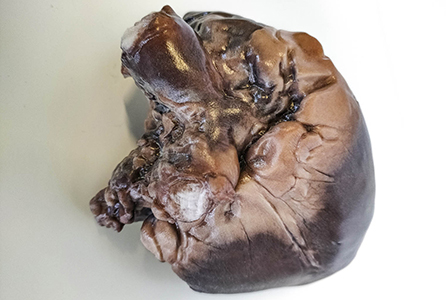A hearty 3D printing project
Doctors and researchers from the University of Florence have used Mimaki’s 3DUJ-553 printer to produce 3D anatomical models.

Friday, 02 Jul 2021 10:24 GMT

The project used a Mimaki 3D printer to produce accurate colour quality
The project was a collaboration between the university and Bompan, Mimaki’s exclusive Italian importer.
With traditional methods of anatomical investigations such as the use of corpses to perform dissection becoming less practical, the project sought to find new methods of studying the body.
3D printing technologies have been used before to produce replicas of human organs, and even to show the effects of dementia on the brain. However, the main goal of this project was to reproduce colour quality.
Paintings and photographs were traditionally used to demonstrate the colours and details of parts of the human body, but 3D printing allows for more accurate and life like representations.

We were impressed by this technology which truly offers full colour printing with a very wide range of colours, thus enabling us to achieve a fundamental milestone in anatomical study”
Doctor Giacomo Gelati was part of the project and developed a patented algorithm for producing a realistic representation of the internal structures of the body.
Gelati explains: “I had a clear objective and achieved this by combining several tools that yielded important results. I started with a scan and then added the photograph to introduce the colour.
“Finally, we needed detailed information on the internal structures, which I integrated using resonance. I was thus able to produce an explorable three-dimensional representation that was viewable from all angles – both on the surface and inside – and, above all, faithful in terms of light, colour, morphology and anatomical topographical relationships.”
Once this had been produced, the team was able to take it one step further and using the Mimaki 3D UV LED 3DUJ-553 printer, produced a 3D printed heart.

3D printing is often used to produce organs for studies
Using colour profiles and a UV LED curing method which can reproduce over 10 million colours in CMYK four-colour, white and transparent, the printer enabled the researchers to achieve a high level of colour quality.
Ferdinando Paternostro is a physician and associate professor in the anatomy section of the Department of Experimental Medicine at the university. Paternostro and Gelati were both pleased with the outcome of using this technology.
They say: “We were impressed by this technology which truly offers full colour printing with a very wide range of colours, thus enabling us to achieve a fundamental milestone in anatomical study.
“Although various 3D technologies exist to obtain morphologically faithful reproductions, we are working hard to reproduce colour quality.”
If you have any news, please email carys@linkpublishing.co.uk or join in with the conversation on Twitter and LinkedIn.
Tags: